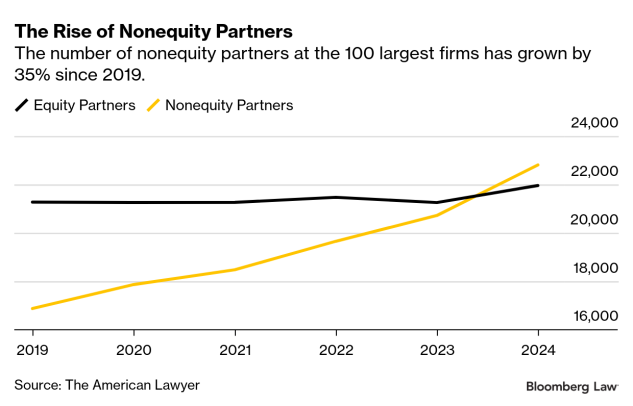Ropes & Gray is choosing to remain a single-tier partnership, bucking a trend across the legal industry, the law firm’s leader said Monday.
The firm opted to retain its single-tier model after considering a separate salaried partner tier, according to Julie Jones, Ropes & Gray’s chair. The firm’s executive committee and other partners explored the option over several months earlier this year, she said.
“We haven’t lost a lot of people—and we have a lot of people who are willing to stick to it,” Jones said. “They feel like being a part of Ropes & Gray and this one-partnership approach is pretty special—it’s a differentiator.”
Rivals such as Wall Street’s Paul Weiss, Debevoise & Plimpton, and Cleary Gottlieb recently have added nonequity partner rungs to free up profits and retain high-performing senior associates who might not otherwise be eligible for equity shares. The shift, made popular by Big Law’s most profitable firm Kirkland & Ellis, comes as competition for rainmakers is driving up the price tag for top partners at elite firms.
The total number of nonequity partners at the 100 largest firms surpassed the equity partner tally for the first time last year, according to data from The American Lawyer. Ropes & Gray is one of 11 of those firms in which all partners earn equity shares.
“It’s fun to think about how to use a cultural difference to be distinct and lead a market, not just follow it,” said Jones.
Ropes & Gray saw some notable departures as it mulled the partnership model. Last week, the chair of the firm’s business restructuring practice group Ryan Dahl, and two other partners, left for Latham & Watkins. A 21-lawyer team of patent litigators left the firm in September for Sheppard, Mullin, Richter & Hampton.
The firm promoted 21 lawyers to partner positions, effective Nov. 1, up from 12 promotions last year.
“Our data show us that we have the same elevation of partnership rate as two-tier firms,” she said.
Kirkland & Ellis, whose partnership is roughly two-thirds nonequity, promoted more than 205 lawyers to partner this year. The firm broke from its tradition by opting not to publicly announce its new class of partners.
Ropes & Gray conducted a “full year of thoroughly deep data dives,” Jones said, concluding that departures are not widespread enough to warrant a change. That process included conversations with firm leadership, partner surveys and small group retreats. Firm leaders also spoke with “a large number” of Ropes & Gray clients, who overwhelmingly said they want “stability” among outside counsel.
Ropes is able to incentivize lawyers to stay at the firm, according to Jones. “We can get the comp right for someone’s contributions,” she said. It also makes the partner tag more meaningful for those who get it.
“You’re a partner without an asterisk,” Jones said.
To contact the reporter on this story:
To contact the editors responsible for this story:
Learn more about Bloomberg Law or Log In to keep reading:
See Breaking News in Context
Bloomberg Law provides trusted coverage of current events enhanced with legal analysis.
Already a subscriber?
Log in to keep reading or access research tools and resources.

